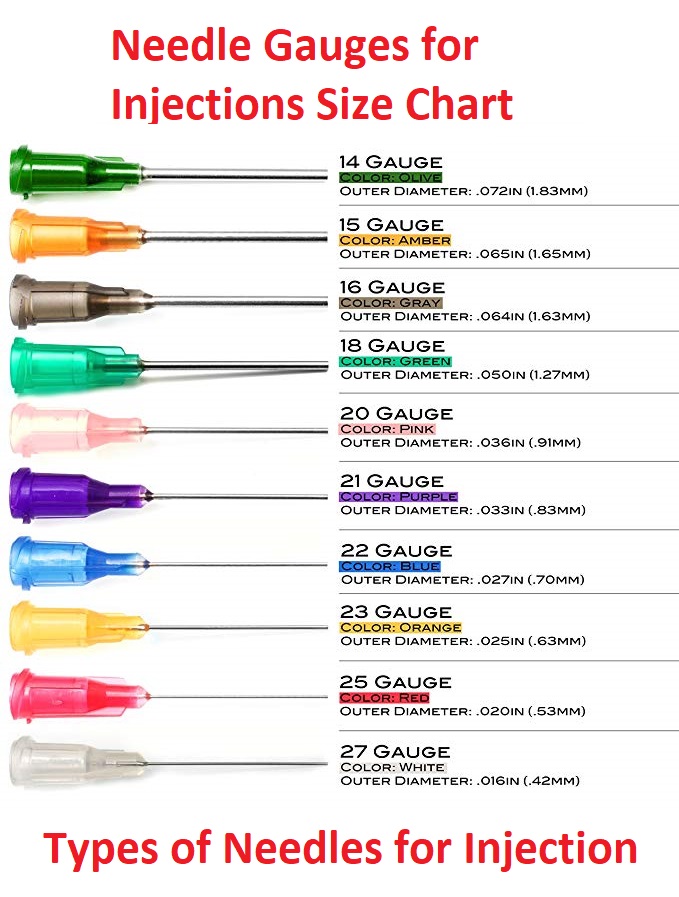Needle gauges for injections Size chart
Types of Needles for Injection
Choosing a Syringe and Needle Size for an Injection
Principles of Injection Technique
There are several factors which need to be considered in choosing the size of a needle to use for an injection or “shot”. They include such issues as:
• the type and viscosity of the medication
• the size and age of the patient
• the mobility status of the patient
• the desired absorption rate for the medication

In general for IM (intramuscular) injections you would use a 21 to 23 gauge needle 1 to 1.5 inches long for an adult. In a child you use a 1 inch long, 25 to 27 gauge needle. In obese patients, 1.5 to 2 inch needles may be necessary.**
For SQ (subcutaneous) injections you would typically use a 25 to 27 gauge needle 3/8 to 5/8 inches long for adults and children alike. Some newer medications such as Byetta for diabetes recommends using 30 or 31 gauge 1/3 inch needles which are ultra fine.
SQ medications are deposited into the loose connective tissue just below the dermis. This is not richly supplied with blood vessels so the absorption rate is slow. There are many pain receptors in this tissue so only non- irritating, water-soluble medications in small doses should be given by the SQ route.
Intramuscular tissue is richly supplied with blood vessels so the medication is more rapidly absorbed by this route. There are few pain receptors so viscous and irritating drugs can be injected into the muscle tissue with less discomfort. In choosing a site consider deep muscle tissue for the most irritating or viscous medications to reduce the possibility of tissue damage. Using a Z-track method may be recommended as well.
Care must be taken to avoid blood vessels, and you must always aspirate with an IM injection to ensure that you have not hit a vessel. If you aspirate blood, remove the needle and prepare a new syringe. Never inject the blood back into the tissue.
Injection Sites
SQ sites typically used are the upper arm, thigh, and abdominal areas in children and adults alike. With frequent injections such as insulin, the site should be rotated with each dose.
Preferred IM sites include the deltoid (upper arm) and the ventrogluteal or rectus femoris, and vastus lateralis in children. In adults IM sites include the deltoid, ventrogluteal, vastus lateralis and dorsal gluteal (with careful land marking to avoid the sciatic nerve.)
In children, you do not inject into the gluteal muscle until they have reached approximately the age of 2 and have been walking for a time sufficient to develop the muscle.
Thanks for the lesson, very much appreciated
Simply understood
Very informative and simple to understand.